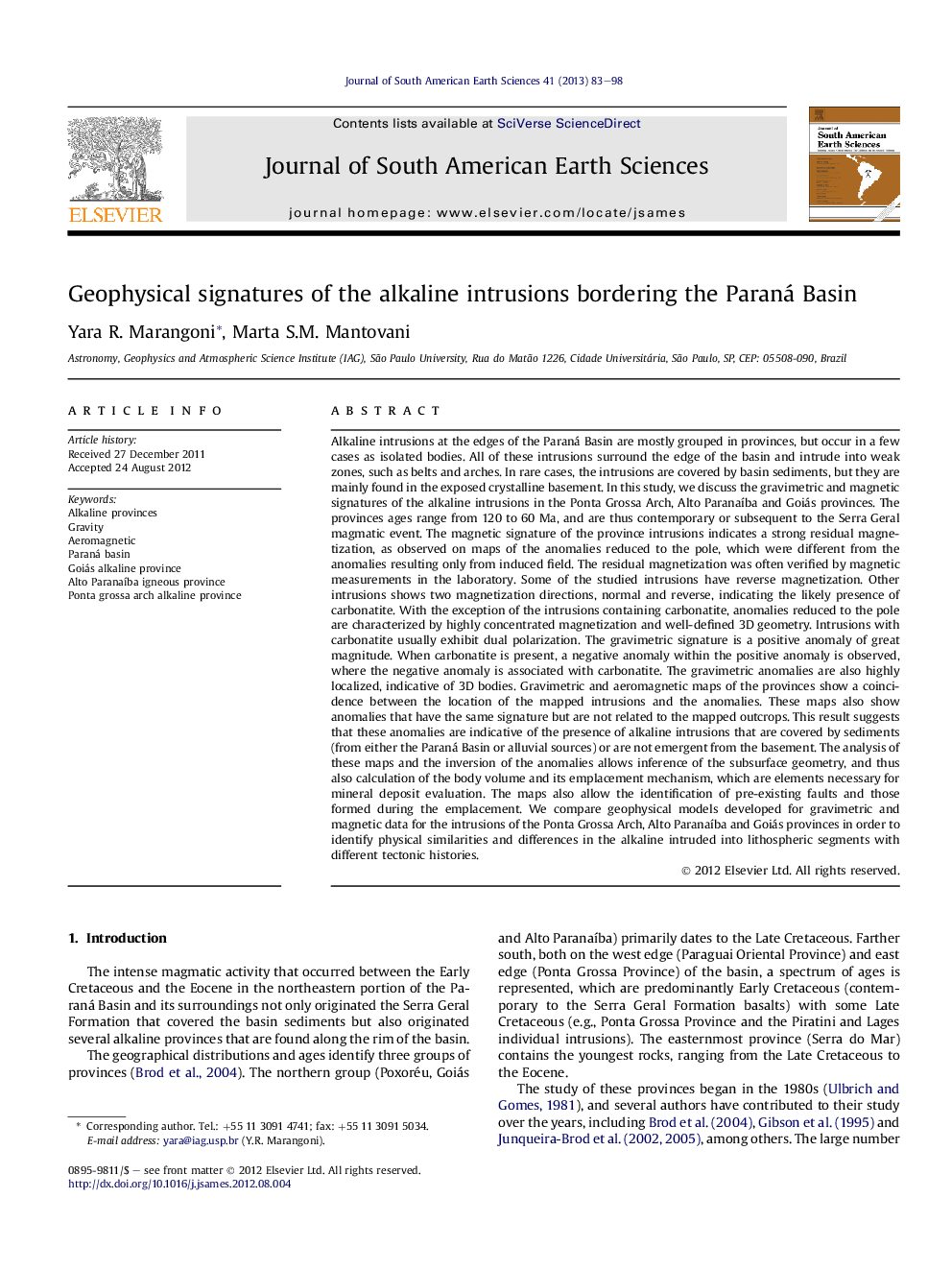| Article ID | Journal | Published Year | Pages | File Type |
|---|---|---|---|---|
| 4682460 | Journal of South American Earth Sciences | 2013 | 16 Pages |
Alkaline intrusions at the edges of the Paraná Basin are mostly grouped in provinces, but occur in a few cases as isolated bodies. All of these intrusions surround the edge of the basin and intrude into weak zones, such as belts and arches. In rare cases, the intrusions are covered by basin sediments, but they are mainly found in the exposed crystalline basement. In this study, we discuss the gravimetric and magnetic signatures of the alkaline intrusions in the Ponta Grossa Arch, Alto Paranaíba and Goiás provinces. The provinces ages range from 120 to 60 Ma, and are thus contemporary or subsequent to the Serra Geral magmatic event. The magnetic signature of the province intrusions indicates a strong residual magnetization, as observed on maps of the anomalies reduced to the pole, which were different from the anomalies resulting only from induced field. The residual magnetization was often verified by magnetic measurements in the laboratory. Some of the studied intrusions have reverse magnetization. Other intrusions shows two magnetization directions, normal and reverse, indicating the likely presence of carbonatite. With the exception of the intrusions containing carbonatite, anomalies reduced to the pole are characterized by highly concentrated magnetization and well-defined 3D geometry. Intrusions with carbonatite usually exhibit dual polarization. The gravimetric signature is a positive anomaly of great magnitude. When carbonatite is present, a negative anomaly within the positive anomaly is observed, where the negative anomaly is associated with carbonatite. The gravimetric anomalies are also highly localized, indicative of 3D bodies. Gravimetric and aeromagnetic maps of the provinces show a coincidence between the location of the mapped intrusions and the anomalies. These maps also show anomalies that have the same signature but are not related to the mapped outcrops. This result suggests that these anomalies are indicative of the presence of alkaline intrusions that are covered by sediments (from either the Paraná Basin or alluvial sources) or are not emergent from the basement. The analysis of these maps and the inversion of the anomalies allows inference of the subsurface geometry, and thus also calculation of the body volume and its emplacement mechanism, which are elements necessary for mineral deposit evaluation. The maps also allow the identification of pre-existing faults and those formed during the emplacement. We compare geophysical models developed for gravimetric and magnetic data for the intrusions of the Ponta Grossa Arch, Alto Paranaíba and Goiás provinces in order to identify physical similarities and differences in the alkaline intruded into lithospheric segments with different tectonic histories.
► We compile geophysical information of three alkaline provinces around Paraná Basin, Brazil. ► The chosen provinces were Ponta Grossa Arch Alkaline Province, Alto Paranaíba Igneous Province and Goiás Alkaline Province. ► Geophysical data are from aeromagnetic surveys and terrestrial gravimetric surveys. ► Using geophysics made it possible to suggest buried alkaline intrusions.
